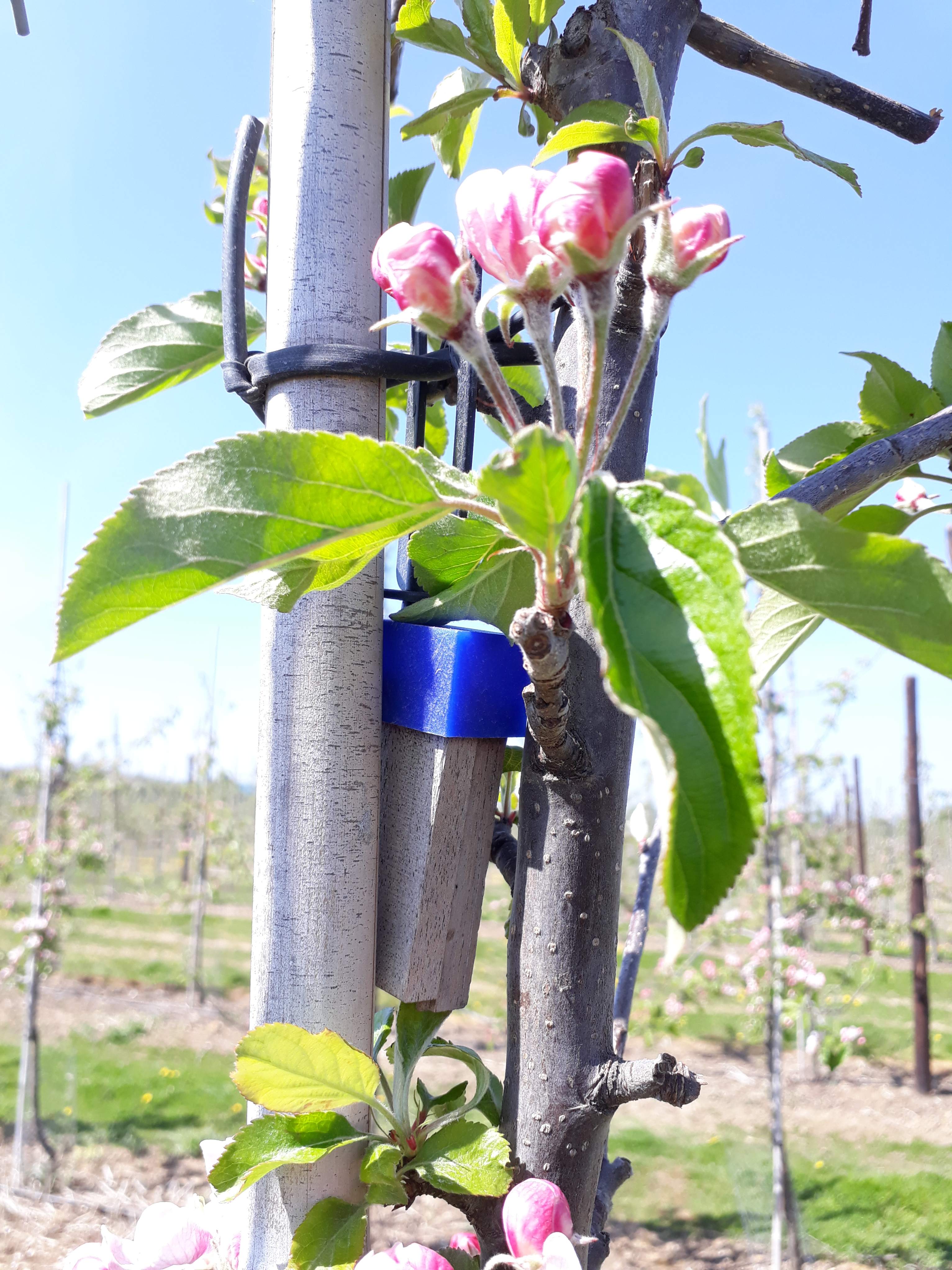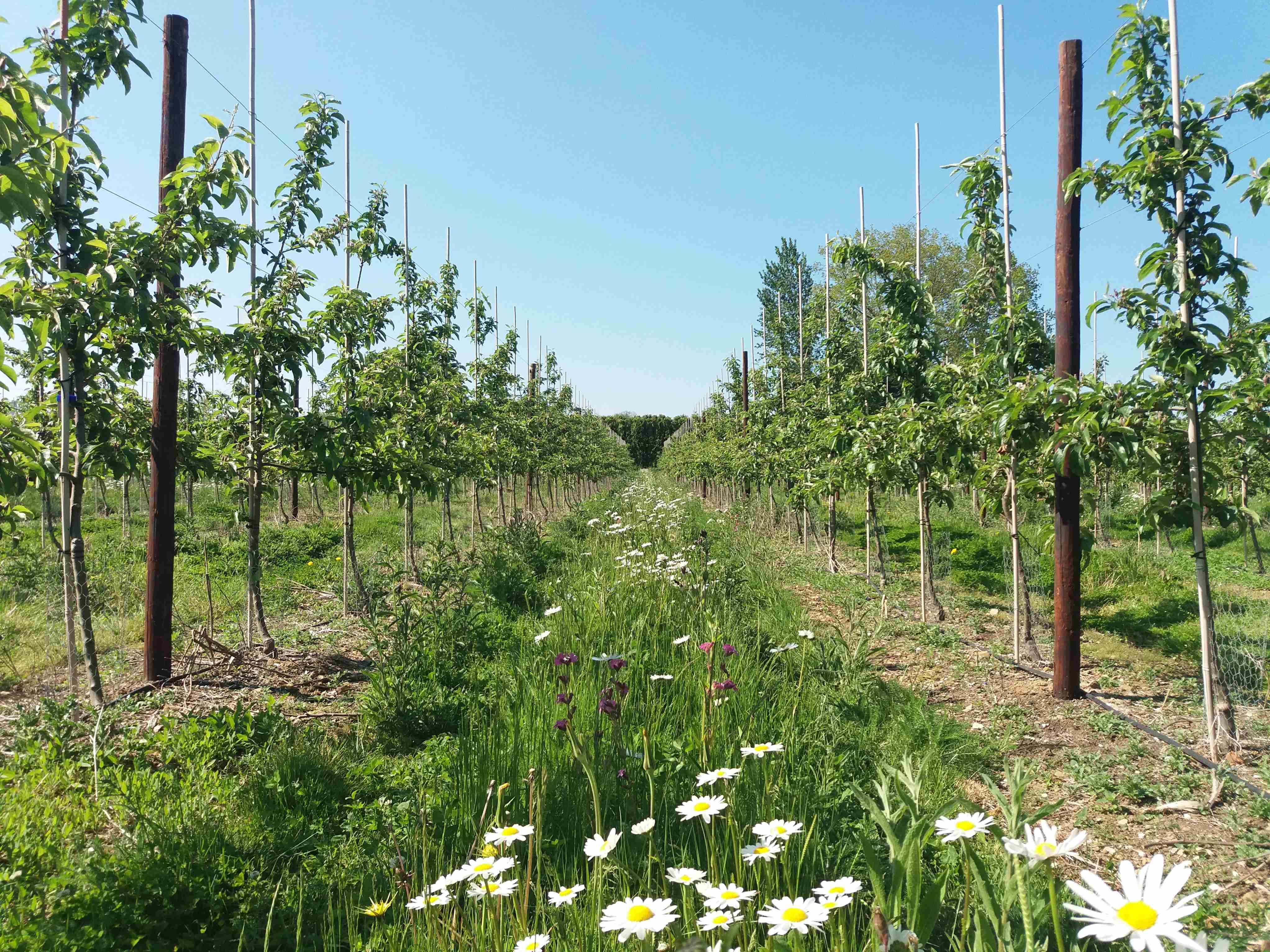Please click here to access the main AHDB website and other sectors.
- Home
- How to enhance the ecosystem in your orchard to prevent pests
How to enhance the ecosystem in your orchard to prevent pests
Natural enemies can help to prevent the build-up of tree fruit pests, such as spider and rust mites and aphids. We’ve been exploring ways to boost your orchard's ecosystem to enhance numbers of natural enemies in pear and apple crops.
When new orchards are planted, there is little for beneficials to feed on, as alleyways won’t be rich in flora. There will be few places to seek refuge from predators or to overwinter, as the tree bark and canopy will be immature. We looked at three ways to boost the ecosystem for important natural enemies: alleyways, earwig refuges and hoverfly attractants.
So, if you’re about to plant a new orchard, or are looking for ways to mitigate the need to spray plant protection products, here are our recommendations to enhance the ecology within your crop.
Sowing wildflowers in orchard alleyways
Good for encouraging these beneficiaries:
- Parasitoids
- Hoverflies
- Web-spinning spiders
Alleyway sowing provides nectar and pollen for natural enemies, helping to boost local pollinator populations over time. Cut just once or twice a year, they also provide structure for web-spinning spiders and a refuge for natural enemies.
Sown native perennial flower mixes established well in alleyways. The diverse mix we trialled not only increased the complexity of the flora available for natural enemies and pollinators but helped outcompete undesirable weeds, such as dock.
During the trials, we saw a reduction in codling-moth-damaged apples and significantly lower numbers of leaf curling midge and aphids during the spring.
To make the sowing more affordable, we used a 20% forb and 80% non-competitive grass mix, with a diverse mix of flower types:
- Yarrow
- Knapweed
- Oxeye daisy
- Bird's-foot trefoil
- Selfheal
- Red campion
- Red clover
Here are my top recommendations for sowing wildflower alleyways:
- Use a perennial native mix for long life of wildflowers and UK-adapted plants
- Tailor your mix to soil type
- In spring or autumn, prepare a good seedbed
- Broadcast the fine seed mix and then roll to press the seed to the soil surface
- Overhead-irrigate if the forecast is dry, to germinate the seed
- In year one, mow to around 10 cm to prevent flowering, to boost leaf growth
- In year two, make a single cut before harvest
Creating refuges for earwigs
Good for encouraging these beneficiaries:
- Predatory spiders
- Earwigs
- Anthocorids
Earwigs will help reduce pests including pear sucker, codling moth and woolly apple aphid.
We clipped earwig refuges into the canopy of the fruit trees to provide shelter for a range of natural enemies. The Wignests ensured earwigs were foraging in the canopy of the trees when feeding at night.
We found five groups of spiders, including sac spiders which hunt at night, in the Wignests. The majority of spiders in the Wignests were orb-weaving species.
Hoverfly attractants
Hoverflies lay eggs in aphid colonies and contribute to control. Attractants bring these highly mobile insects in from surrounding areas. In our treated plots, we saw more hoverflies flying and more lacewings in the canopy of apple trees. Spiders, especially money spiders, were also more abundant.
Access more information and the latest research project report:
Improving Integrated Pest and Disease Management in Tree Fruit



